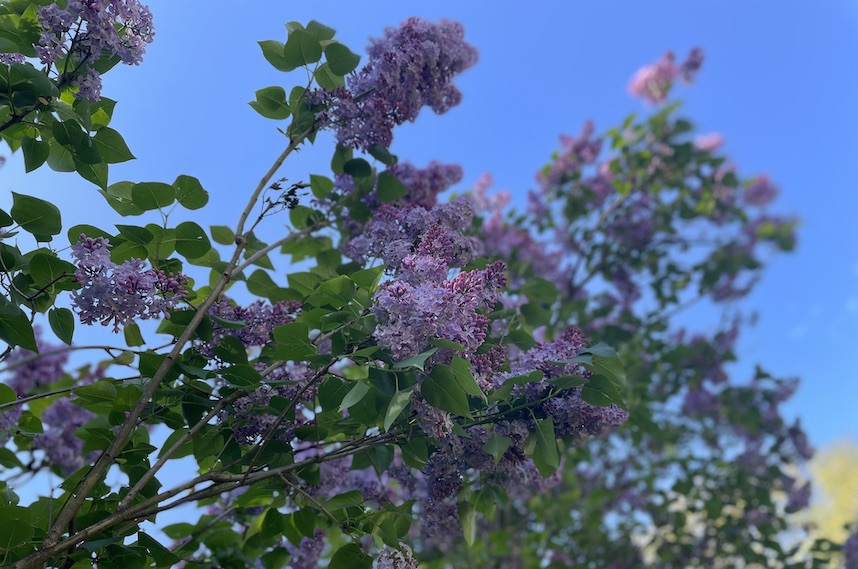
When I lived in New York I spent a small fortune every year buying bodega lilacs so that I could inhale their scent at every possible moment during their brief and fragrant annual window. Tulips, roses, irises even, you can find at all times of the year. They’re grown halfway around the world, and while they don’t speak to a particular moment or mood, they will brighten your kitchen on a cold January night.
Lilacs though, they’re only around for a few weeks in late April and early May. They have but one gorgeous lavender moment a year. There’s a bush in my backyard, and sometimes I just stroll up to it, press my face close to its light purple clusters, and stand there with my eyes closed, sniffing them, like a real weirdo. It’s not just that I love how they they smell. It’s that they make me feel connected to a specific moment in time, present, but also almost preemptively nostalgic. My love for them is particularly intense this year because I’m so relieved that the winter is over, and that the moment we’re in, for all its ambiguity and complexity, is one that feels warmer, lighter, more joyful than the recent past. It’s a moment I actually want to fully take in.
Until recently I had never really messed with flower gardening—the kind where you plan out perennials that will bloom year after year—I’ve always put tomatoes and kale and cucumbers in the ground when I’ve had a yard, and I did grow giant sunflowers on my deck in Brooklyn. But you know you’ve reached a certain pinnacle of middle-aged ladyhood when the gardening catalogues start showing up in your mailbox and you don’t immediately toss them in the recycling bin.
This spring is different, though. My mom lives about 45 minutes away from me, and during our lonely, spooky spring last year she would drive to my house with cardboard boxes loaded with day lilies, walking irises, and Star of Bethlehem, all perennials she had cleared out of her garden, so I could plant them in my own. She gifted me four tiny lilacs, sprouts from the bushes that line her yard in every shade of purple. She also brought me a glorious pair of peonies.
After we’d stand on my lawn for 20 minutes or chatting nervously about how infrequently we were going to the grocery store and how empty the highway was, she’d leave and I’d dig holes in my weed-choked flower beds and plant her gifts here and there, with almost no plan other than to tilt the balance of pigweed and wild spearmint in the direction of flowers.
Now, having endured the marathon of the past 14 months of living day-to-day, working to understand the rules around masking, traveling, whether my kids could go to school, trying to grasp the science, while also wondering how we’ll carry all this uncertainty, loss, and anxiety into the future, I’ve found some new, lighter energy replacing the sediment from the awful winter behind us. My mom is fully vaccinated, I get my second dose next week, the snow’s melted, the trees got green, my head’s cleared, and over the course of April, the shape of my garden emerged—the hibiscus and the yarrow slowly climbing out of the ground, clumps of lilies sprouting with green ebullience. Irises I scored from kindly strangers on my local Buy Nothing group poking up between the weeds.
Last year it was just a bunch of stuff in the ground, a thing that was happening, but without a plan or a form. Now I can see where I need to add some ground cover. I’ll order bulbs from my gardening catalogues to plant this fall with confidence, and vision, even. I can picture my three-foot lilac sprouts as bushes laden with blooms in a few years. That invitation to imagine the future at a distance, to calmly assume we’ll all be here to smell the lilacs, and look hopefully at the rosy peony stalks emerging from the ground, is a joy and a luxury that I’m grateful to have.

